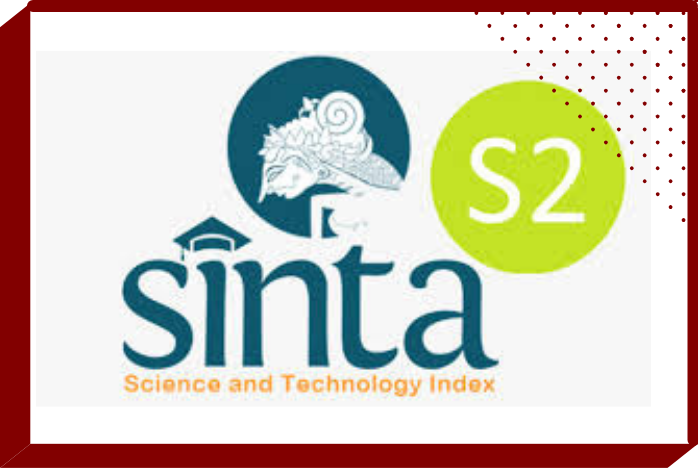Perbandingan Puisi “Doa” Karya Chairil Anwar dan “Tuhanku” Karya Herawati Mansur
 Abstract views: 2895
,
Abstract views: 2895
,
 PDF downloads: 5772
PDF downloads: 5772
Abstract
This research is motivated by the similarity of themes in the reading of Chairil Anwar's "Doa" poem and Herawati Mansur's "God" poem. The purpose of this study was to describe the similarities and differences between the two poems. The method used in this research is comparative descriptive. The data sources used are "Doa" by Chairil Anwar and the poem "My God" by Herawati Mansur. This study uses an intertextuality approach. The results of this study found similarities between the two poems, including the theme of divinity, using the same diction, using hyperbole, and there are similarities in meaning in the poetry lines. While the difference between the two poems is the difference in title, the line in the poem "Doa" is 16 lines while in the poem "My Lord" there are 18 lines. In addition, the messages in the two poems are also different. In the poem "Doa" has a mandate to invite readers to reflect and live life. Meanwhile, the poem "My God" has a mandate that we as creatures must always obey and have faith in God.
Downloads
References
Adhitya, T., Nazaruddin, K., Munaris, & Fuad, M. (2014). Aku-lirik religius dalam antologi chairil anwar dan kelayakannya sebagai bahan ajar. Jurnal Kata (Bahasa, Sastra, Dan Pembelajarannya), 2(1), 1–10.
Anwar, C. (1986). Doa (Buku Antologi Aku Ini Binatang Jalang). Jakarta: Gramedia Pustaka Utama.
Dwi Savira, A. T., & Isnaniah, S. (2022). Representasi Nilai Kenabian dalam Antologi Puisi Rumah-Mu Tumbuh di Hati Kami Karya Sosiawan Leak: Tinjauan Sastra Profetik. GHANCARAN: Jurnal Pendidikan Bahasa Dan Sastra Indonesia, 3(2), 147–167.
Geofany, C., Triananda, D., & E., E. S. (2018). Perbandingan Puisi Doakarya Amir Hamzah dan Doa Karya Sanusi Pane. Asas: Jurnal Sastra, 7(3), 62–71.
Gloriani, Y., & Novia, T. (2012). Analisis Diksi, Rima, dan Gaya Bahasa pada Puisi karya Siswa Kelas VIII SMP Negeri 1 Sindangagung Kabupaten Kuningan Tahun Ajaran 2012/2013. Journal of Chemical Information and Modeling, 1(1), 1–4.
Hidayatullah, A. (2018). Tema dan Gaya Bahasa Puisi Siswa SMP: Kajian Struktural. Journal of Language Learning and Research (JOLLAR), 1(2), 1–11.
Laila, A. (2015). Gaya Bahasa Perbandingan dalam Kumpulan Puisi Melihat Api Bekerja Karya M Aan Mansyur (Tinjauan Stilistika). Gramatika STKIP PGRI Sumatera Barat, 1(1).
Mabruri, Z. K. (2020). Kajian Tipografi Puisi-Puisi Indonesia. Prakerta, 03, Nomor, 5.
Maldini, F. C., & Haryanti, N. D. (2021). Penggambaran penyair terhadap doa pada puisi- puisi berjudul doa dalam kesusastraan Indonesia. Diglosia: Jurnal Pendidikan, Kebahasaan, Dan Kesusasteraan Indonesia, 5(2), 487–499.
Mansur, H. (2016). Tuhanku.
Maulida, S. Z. (2020). Stilistika Puisi Karya Mahasiswa Asing di IAIN Tulungagung. GHANCARAN: Jurnal Pendidikan Bahasa Dan Sastra Indonesia, 1–9.
Moleong, L. J. (2018). Metodologi Penelitian Kualitatif. Remaja Rosda Karya.
Nafisa, N. N., Kanzunnudin, M., & Roysa, M. (2021). Nilai-Nilai Pendidikan Dalam Novel Cinta Suci Zahrana Karya Habiburrahman El Shirazy. GHANCARAN: Jurnal Pendidikan Bahasa dan Sastra Indonesia, 2(2), 111–124.
Ningrum, W., Wikanengsih, & Nugraha, V. (2020). Analisis Unsur Intrinsik Puisi “ Aku ” Karya Chairil Anwar. Parole (Jurnal Pendidikan Bahasa Dan Sastra Indonesia), 3(4), 623–628.
Nino, S. M. (2020). Intertekstualitas Puisi “Di Jembatan Mirabeau” karya Agus R. Sarjono dan Le Pont Mirabeau karya Guillaume Apollinaire. Nusa: Jurnal Ilmu Bahasa Dan Sastra, 15(3), 379–394.
Pradopo, R. D. (2010). Pengkajian Puisi (12th ed.). Gadjah Mada University Press.
Purnamasari, V. (2017). Perbandingan Gaya Bahasa Puisi-Puisi Emha Ainun Nadjib Dan Kh . Achmad Mustofa Bisri.
Savira, A. T. D., & Isnaniah, S. (2022). Representasi Nilai Kenabian dalam Antologi Puisi Rumah-Mu Tumbuh di Hati Kami Karya Sosiawan Leak: Tinjauan Sastra Profetik. GHANCARAN: Jurnal Pendidikan Bahasa Dan Sastra Indonesia, 3(2), 147–167.
Sugiyono. (2019). Metode Penelitian Kuantitatif, Kualitatif, dan R&D. Bandung: Alfabeta.
Copyright (c) 2022 GHANCARAN: Jurnal Pendidikan Bahasa dan Sastra Indonesia

This work is licensed under a Creative Commons Attribution-ShareAlike 4.0 International License.
Ghancaran: Jurnal Pendidikan Bahasa dan Sastra Indonesia uses an Open Access Policy under the Creative Commons Attribution-ShareAlike 4.0 International License. Authors publishing in this journal agree to the following terms:
- Ghancaran Journal holds the copyright and grants the journal rights for first publication with the work simultaneously licensed under a

The work is distributed under Creative Commons Attribution-ShareAlike 4.0 International License which allows others to share, copy, and redistribute the material in any media or format and adapt, remix, change, and develop the material even for commercial purposes, as long as it is stated credit and license derivative works under similar terms. - Authors may make additional contractual arrangements for non-exclusive distribution of the journal's published work version.
- Authors are permitted to post their work online (e.g., in institutional repositories or on their websites) before and during submission, as doing so may lead to productive exchange.



















